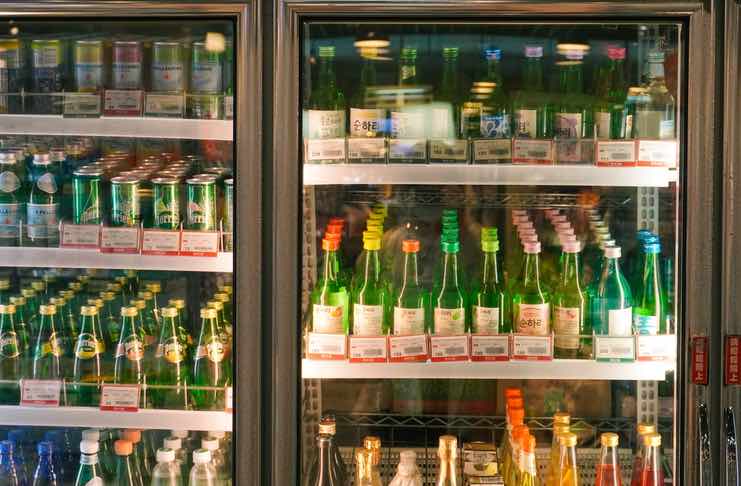
Soju is more than just a drink; it’s a cultural icon in Korea, a symbol of celebration, tradition, and everyday life. While this clear, slightly sweet spirit has been a staple in Korean households for centuries, its popularity has surged internationally, making it a must-try for spirits enthusiasts around the world. But what makes soju so unique? The answer lies in its distilling process. This article, as part of our business blog, delves into the intricate and fascinating process behind Korea’s favorite drink.
The global soju market has experienced significant growth, driven by the rising popularity of Korean culture worldwide. According to the latest data, the soju market was valued at approximately USD 5.30 billion in 2023, the market is projected to grow at a compound annual growth rate (CAGR) of 5.3% from 2024 to 2030. This growth is fueled by soju’s versatility, affordability, and the increasing availability of innovative flavors that cater to diverse consumer preferences.
Major brands have expanded their reach through international distribution channels, making soju a staple in bars and restaurants globally. Additionally, the trend towards premium and craft soju varieties is attracting a new segment of consumers willing to pay more for unique and high-quality experiences.

The Origins of Soju
To fully appreciate the distillation process, it’s essential to understand where soju comes from. Soju’s origins date back to the 13th century during the Mongol invasions of Korea. The Mongols, who had learned the distillation process from the Persians, introduced it to the Korean peninsula. The early versions of soju were much stronger than the modern versions, resembling more of a potent vodka. Over the centuries, soju evolved into a milder, more refined spirit, adapting to the tastes and preferences of Koreans.
Watch this video to learn more about Soju and how it dominated the Korean market:
Ingredients: The Foundation of Soju
The distillation process of soju starts with its ingredients, which are crucial to the final product’s flavor and quality. Traditional soju is made from grains such as rice, wheat, or barley. However, modern soju can also be produced from sweet potatoes, tapioca, or even a combination of grains and starches. The choice of base ingredients affects the flavor profile of the soju, with rice-based soju offering a cleaner, smoother taste, and sweet potato soju providing a slightly earthier, more robust flavor.
Fermentation: The First Step
Once the ingredients are selected, the first step in the distillation process is fermentation. The grains or starches are cooked to break down their complex carbohydrates into simpler sugars. These sugars are then mixed with water and a fermentation starter known as “nuruk,” a traditional Korean fermentation agent made from wheat, rice, and other grains.
The fermentation process typically lasts several days to weeks, during which the mixture is kept at a controlled temperature. This stage is crucial as it converts the sugars into alcohol and develops the flavors that will define the soju. The result is a mash with a relatively low alcohol content, but rich in flavor compounds.
Distillation: The Heart of Soju Production
After fermentation, the mash is ready for distillation, the process that gives soju its signature clarity and strength. Distillation involves heating the fermented mash to separate the alcohol from the water and other components. As the mixture heats up, the alcohol, which has a lower boiling point than water, vaporizes first. This alcohol vapor is then collected and condensed back into liquid form, resulting in a purer, more concentrated spirit.
Watch this video to get a glimpse into a production line of Soju:
Traditional vs. Modern Distillation Methods
There are two primary methods of distillation used in soju production: traditional pot distillation and modern continuous distillation.
Pot Distillation:
Traditional soju was made using a single-pot distillation method. The fermented mash was heated in a large pot, and the alcohol vapors were collected in a separate container. This method produces a soju that is stronger and more flavorful, with an alcohol content that can range from 20% to over 50%. However, due to its intensity, traditional soju is often diluted with water to make it more palatable.
Continuous Distillation:
Modern soju is typically produced using continuous distillation, a process that allows for a higher volume of production and a more consistent product. In this method, the fermented mash is fed into a distillation column where it is heated, and the alcohol is continuously separated from the water. This process results in a smoother, lighter soju with a lower alcohol content, typically around 16% to 25%. The modern distillation method also allows for the addition of flavorings and sweeteners, giving rise to the wide variety of flavored soju available on the market today.
Filtration and Aging: Refining the Spirit
Once distillation is complete, the soju undergoes a filtration process to remove any impurities and enhance its clarity and smoothness. Traditional soju was often filtered through charcoal, which not only purified the spirit but also added subtle flavor notes. Some modern producers still use charcoal filtration, while others may employ different methods to achieve a clean, crisp product.
Bottling and Consumption: The Final Steps
After filtration, the soju is diluted to the desired alcohol content and then bottled. Modern soju often comes in sleek green bottles, a signature look that has become synonymous with the drink. The final product is typically clear, with a smooth, slightly sweet taste that can be enjoyed straight, on the rocks, or mixed into cocktails.
Conclusion
Understanding the distilling process behind soju provides a deeper appreciation for this iconic Korean spirit. From its humble beginnings as a strong, grain-based liquor to its modern incarnation as a smooth, versatile drink, soju has evolved through centuries of tradition and innovation. Whether you’re a seasoned soju drinker or new to the world of Korean spirits, knowing the craftsmanship that goes into each bottle adds to the enjoyment of this beloved drink.




